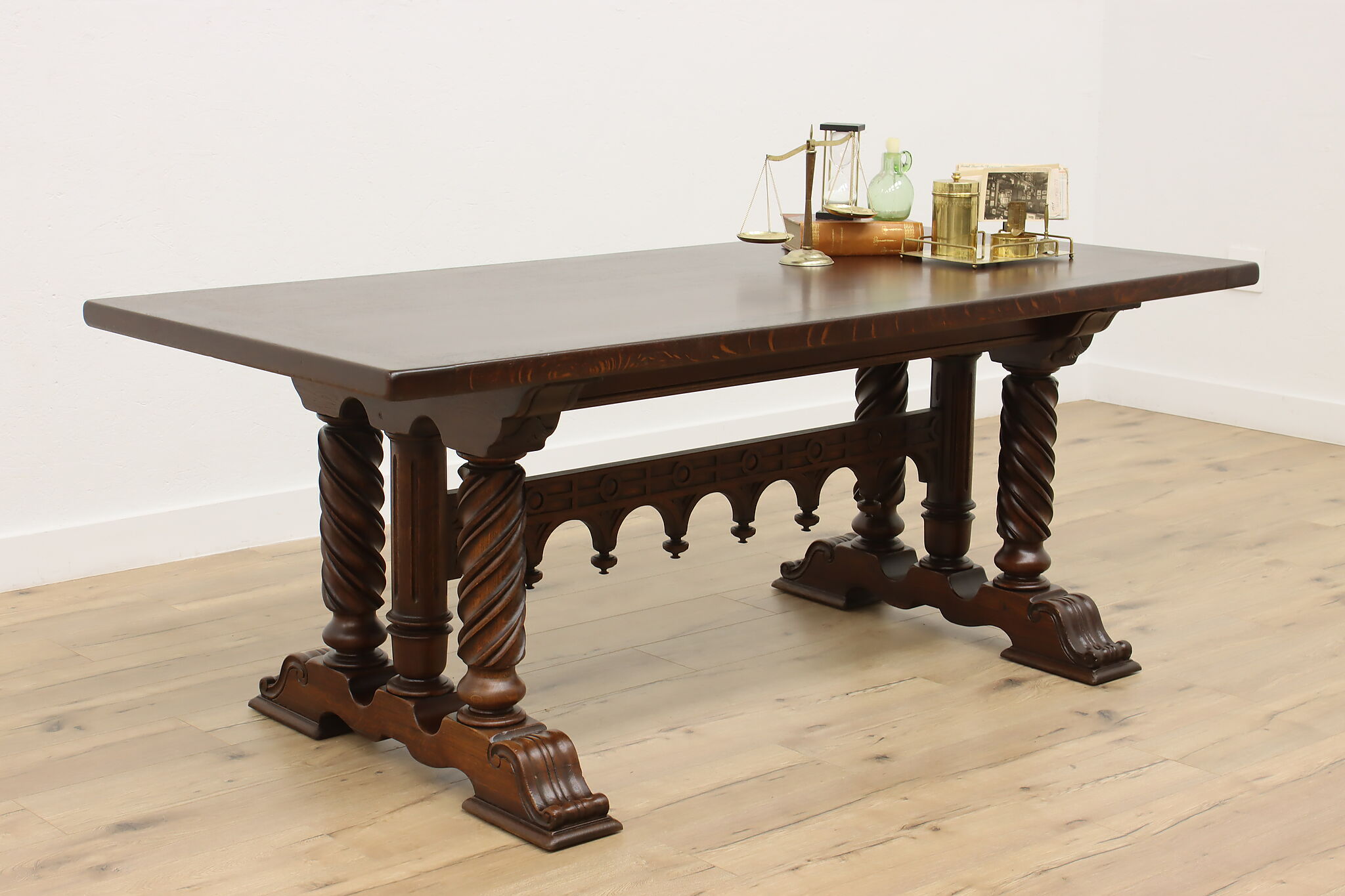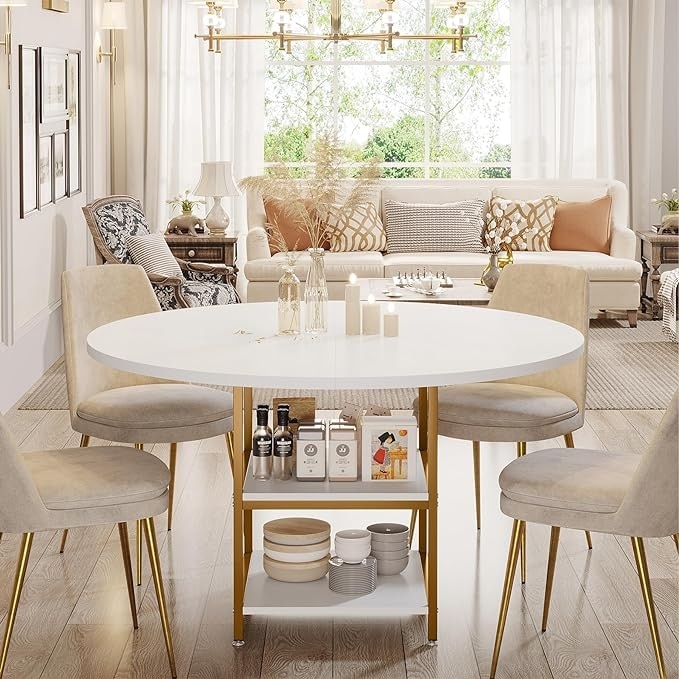From Standard to Modern: Locate the Perfect Dining-room Table Legs for Your Design
The option of dining-room table legs plays a critical function in specifying the general personality of your space, bridging the void in between standard craftsmanship and modern aesthetics. While timeless layouts such as cabriole and turned legs stimulate a sense of timeless sophistication, modern designs like barrette and geometric options present a chance for striking aesthetic interest. Reviewing the right balance between these styles requires a nuanced understanding of your existing décor and individual preference. As you consider these components, the concern stays: just how can you effortlessly integrate these diverse leg styles to create a harmonious dining experience?
Understanding Table Leg Styles
The selection of dining-room table leg styles can dramatically influence both the looks and functionality of the space. Each leg style adds distinct functional attributes and visual aspects, accommodating varied layout choices and usage demands. Understanding these designs is crucial for picking the appropriate eating table that straightens with your general interior layout vision.
For example, tapered legs use a tidy, timeless appearance that can enhance an area's elegance, while pedestal bases supply stability and maximize legroom, making them suitable for smaller sized spaces. Hairpin legs, a trademark of mid-century modern-day style, present an industrial style, enabling for an airy, open feeling. In a similar way, trestle legs stimulate rustic beauty, supplying robust assistance and a feeling of timelessness.
Wood legs can bring heat and appearance, whereas steel options frequently share a streamlined, contemporary vibe. Inevitably, understanding table leg styles is important for creating a natural dining area that reflects individual style while guaranteeing functionality and convenience.
Traditional Table Leg Options
When picking eating room table legs, typical choices often embody ageless sophistication and workmanship. These layouts reflect an abundant heritage and a dedication to quality, making them ideal for those that value traditional aesthetic appeals.
Among one of the most iconic typical leg styles is the cabriole leg, defined by its elegant bent form. This layout frequently includes ornamental carvings and is most frequently found in Queen Anne and Chippendale furnishings. One more popular alternative is the turned leg, which flaunts a series of smooth, rounded forms that give a timeless appearance while keeping security.
Additionally, the straight leg, while easy, provides a unadorned and tough structure that can blend flawlessly with a selection of tabletop designs. For those attracted to ornate detailing, claw-and-ball feet legs stimulate a sense of majesty and can act as a stunning prime focus in any eating area.
Last but not least, stand bases, although not strictly legs, give an alternate typical alternative that enables ample legroom and can be perfectly sculpted. Each of these conventional leg styles adds to the overall setting of a dining-room, weding feature with aesthetic allure.

Modern Table Leg Styles
Modern table leg designs supply a varied range of styles that highlight clean lines and innovative products. These layouts commonly focus on functionality while working as striking prime focus within an eating space. Minimal appearances prevail, with legs crafted from products such as metal, glass, and crafted timber, which add to a modern and airy feel.
One prominent style is the barrette leg, identified by its slim, conical structure that offers security without overwhelming the table top (dining room table legs). This design is often located in mid-century modern-day furniture and can effortlessly enhance numerous table shapes. An additional pattern is using geometric Learn More forms, where legs may tackle asymmetrical or angular types, adding visual rate of interest and a touch of creativity

Blending Designs for Distinct Rooms
Typically, homeowners seek to develop one-of-a-kind eating rooms that mirror their individual style by mixing numerous style aspects. This method permits the consolidation of varied aesthetics, causing an unified yet distinctive setting. As an example, matching a rustic wooden table with smooth, modern metal legs can produce a distinctive contrast that boosts the area's overall official website charm.
Furthermore, incorporating vintage table legs with modern tabletops can evoke a feeling of history while keeping a modern sensibility. Such mixes not just display specific preference however additionally urge creative thinking, enabling property owners to curate a room that feels both individual and welcoming.
Color plays an essential role in this blending process; choosing table legs that match or contrast with the existing color design can boost visual rate of interest. For instance, whitewashed legs link can soften the boldness of a dark table surface, producing a balanced aesthetic.
Tips for Picking the Right Legs
Selecting the right table legs is vital for attaining both performance and visual appeal in your eating area. Begin by thinking about the overall style of your area. Standard settings take advantage of legs that feature complex makings or transformed layouts, while contemporary spaces might ask for smooth, minimal styles.
Following, examine the elevation and security of the legs. dining room table legs. Common table vary in between 28 to 30 inches in elevation, so guarantee the legs match this dimension for convenience. Additionally, robust products, such as wood or metal, can improve stability and durability
Evaluate the leg shape as well-- options include right, tapered, or pedestal styles. Straight legs use a timeless look, while tapered legs can include a touch of style. Pedestal bases supply enough legroom and are excellent for smaller rooms.
Conclusion
In recap, choosing the perfect eating room table legs calls for careful factor to consider of both modern and standard styles. By integrating leg style, elevation, and product with the overall decor, a cohesive and welcoming environment can be accomplished.
The selection of dining room table leg styles can significantly affect both the looks and capability of the area. Inevitably, recognizing table leg styles is crucial for developing a cohesive dining area that mirrors individual design while guaranteeing practicality and comfort.One of the most legendary conventional leg designs is the cabriole leg, characterized by its elegant curved shape. Straight legs use a classic look, while conical legs can add a touch of style.In summary, choosing the optimal eating space table legs calls for careful consideration of both traditional and modern styles.